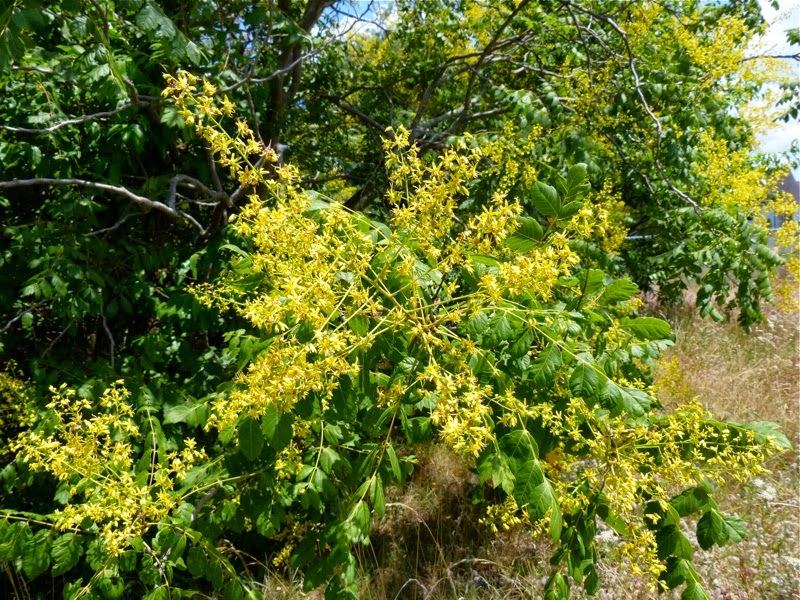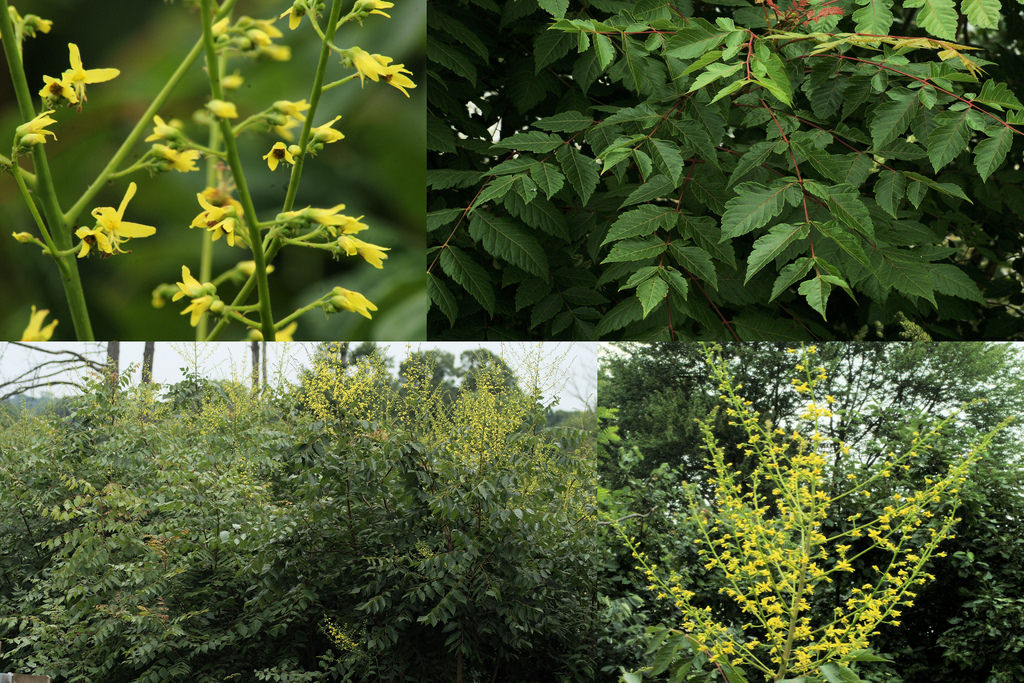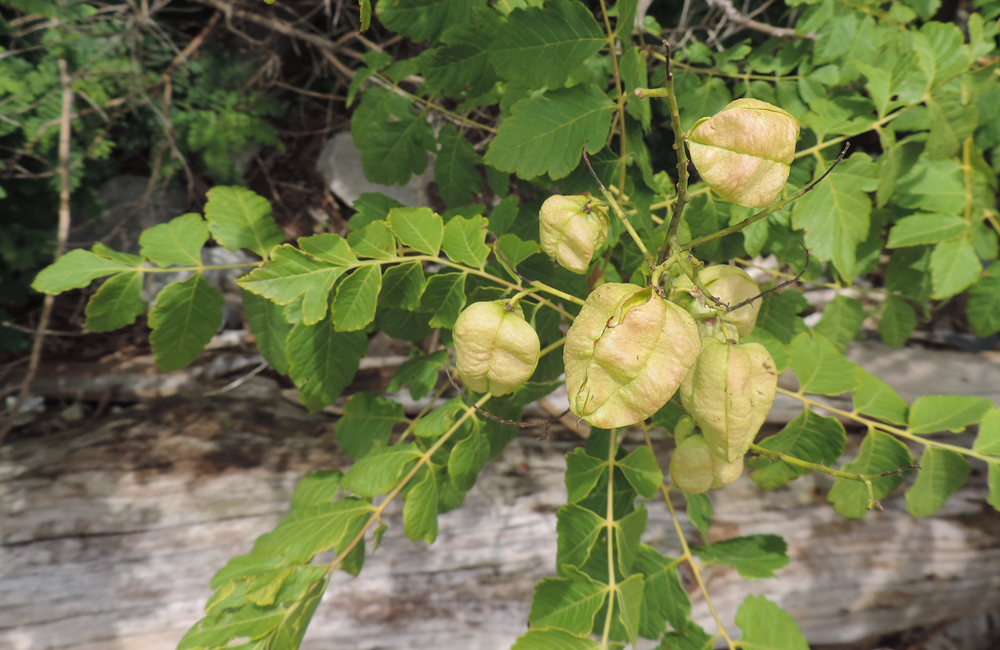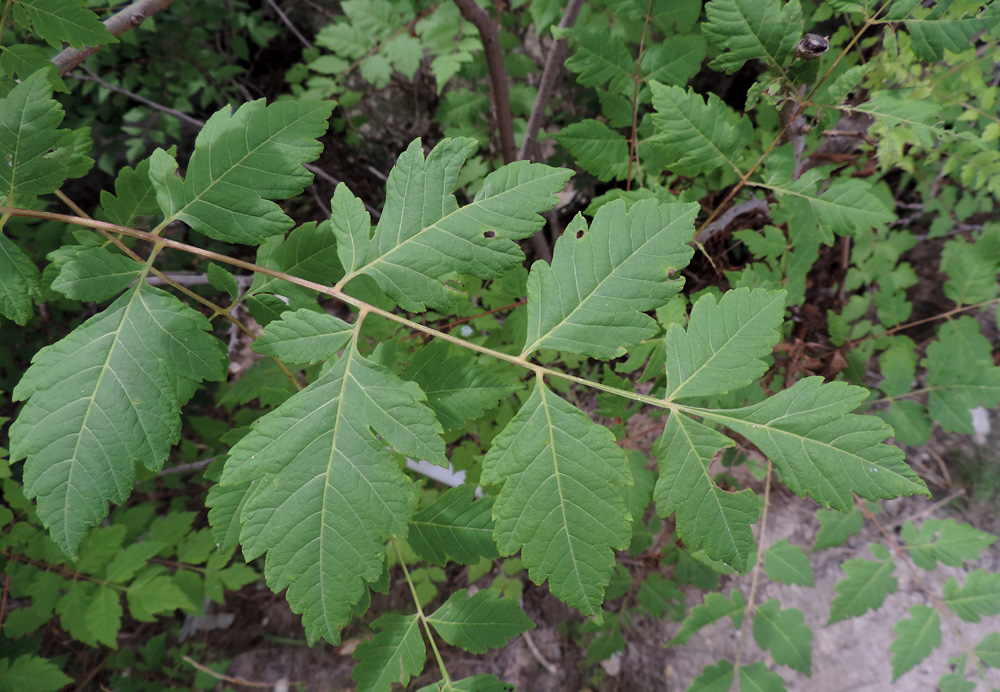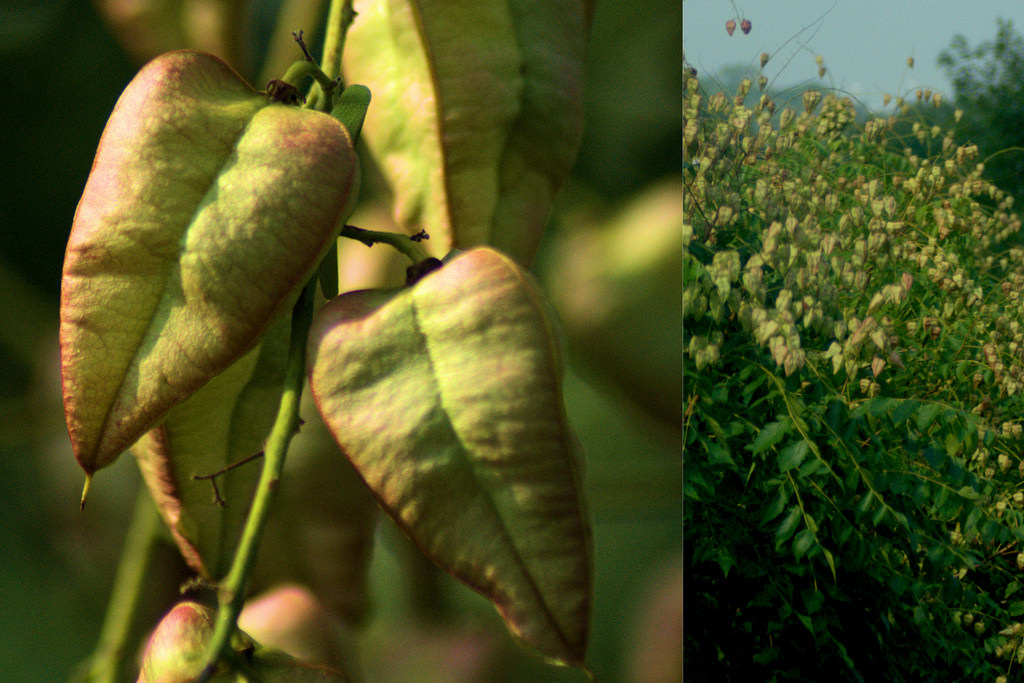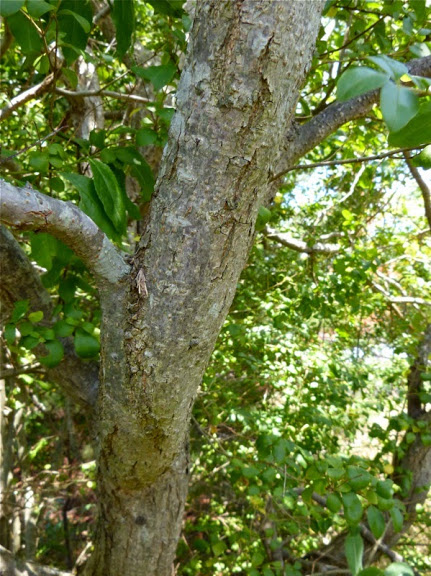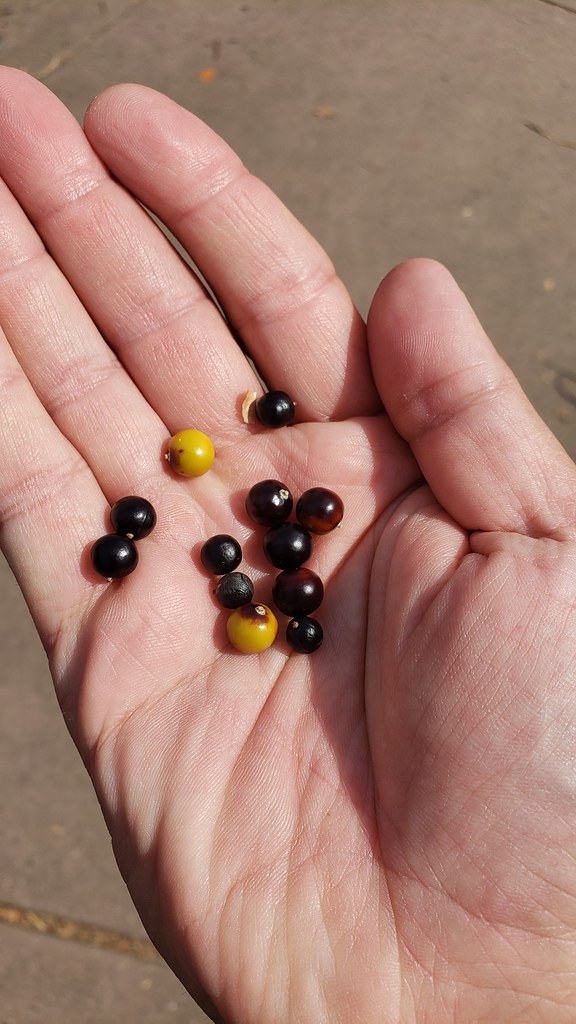Map Snapshot












62 Records
Status
Goldenrain Tree is an introduced, Asian species that is often planted as a street tree. The Digital Atlas of the Virginia Flora notes that, in Virginia, this species has "frequently escaped on roadsides and [in] other open, disturbed habitats state-wide." The same thing may be happening in Maryland. This species bears watching in Maryland (J. Hill/MNPS).
"Even though this tree is loved and valued by many, we cannot ignore the invasive characteristics that initiated its appointment as a Category II exotic invasive. Koelreuteria is a fast growing plant that is able to grow in an array of environmental conditions" (UF-IFAS Center for Aquatic and Invasive Plants).
Description
Goldenrain-Tree is a member of the Sapindaceae (Soapberry Family). The leaves are pinnately compound; the flowers are yellow and arranged in large panicles (when falling, they have been said to resemble "golden rain"); and the fruits ripen into brown, papery capsules that look a bit like Chinese lanterns (J. Hill/MNPS).
This species is still "recommended for cities because it is drought tolerant, pollution tolerant, and is pretty when it blooms" (J. Stasz, pers. comm.).
Relationships
A host to Red-shouldered Bug (Goldenrain-tree Bug).
Seasonality Snapshot
Source: Wikipedia
| Koelreuteria paniculata | |
|---|---|

| |
| Foliage and flowers of Koelreuteria paniculata var. apiculata | |
| Scientific classification | |
| Kingdom: | Plantae |
| Clade: | Tracheophytes |
| Clade: | Angiosperms |
| Clade: | Eudicots |
| Clade: | Rosids |
| Order: | Sapindales |
| Family: | Sapindaceae |
| Genus: | Koelreuteria |
| Species: | K. paniculata
|
| Binomial name | |
| Koelreuteria paniculata | |
| Synonyms[2] | |
|
List
| |

Koelreuteria paniculata is a species of flowering plant in the family Sapindaceae, native to China. Naturalized in Korea and Japan since at least the 1200s,[3] it was introduced in Europe in 1747, and to America in 1763, and has become a popular landscape tree worldwide.[4][5] Common names include goldenrain tree,[6][7] pride of India,[8] China tree,[9] and the varnish tree.[7]
Description
[edit]It is a small to medium-sized deciduous tree growing to 7 m (23 ft) tall, with a broad, dome-shaped crown. The leaves are pinnate, 15–40 cm (6–16 in) long, rarely to 50 cm (20 in), with 7–15 leaflets 3–8 cm long, with a deeply serrated margin; the larger leaflets at the midpoint of the leaf are sometimes themselves pinnate but the leaves are not consistently fully bipinnate as in the related Koelreuteria bipinnata.[3]
The flowers are yellow, with four petals, growing in large terminal panicles 20–40 cm (8–16 in) long.[10] The fruit is a three-part inflated bladderlike pod, 3–6 cm long and 2–4 cm broad, that is green, then ripening from orange to pink in autumn. It contains several dark brown to black seeds 5–8 mm diameter.[5]
Taxonomy
[edit]Publication
[edit]First published in 1772, in the 1771 edition of Novi commentarii academiae scientiarum imperialis Petropolitanae, attributed to Erik Laxmann.[2][11]
Varieties
[edit]Several varieties have been described:
- K. paniculata var. paniculata. Northern China and Korea. Leaves single-pinnate.
- K. paniculata var. apiculata (Rehder & E.H.Wilson) Rehder (syn. K. apiculata).[12] Western China (Sichuan), intergrading with var. paniculata in central China. Leaves with larger leaflets commonly bipinnate.
- K. paniculata var. fastigiata. Small growing columnar form originated in 1888.[13]
- K. paniculata var. variegata. a form with variegated foliage.[13]
But none of them are accepted.[2]
Cultivation
[edit]K. paniculata has been cultivated since ancient times. In the Zhou dynasty it was one of the five official memorial trees (alongside P. tabuliformis, P. orientalis, S. japonicum and certain Poplars), being planted next to the tombs of scholars.[14]
It is popularly grown as an ornamental tree in temperate regions all across the world because of the aesthetic appeal of its flowers, leaves and seed pods. Several cultivars have been selected for garden planting, including 'Fastigiata' with a narrow crown, and 'September Gold', flowering in late summer.
In the UK the cultivar ‘Coral Sun’ has gained the Royal Horticultural Society's Award of Garden Merit.[15][16]
In some areas, notably the eastern United States and particularly in Florida, it is considered an invasive species.[17]
Gallery
[edit]-
Fruits
-
Bark
-
Flowers & legumens in the top of a tree in São Paulo Brazil
-
Koelreuteria paniculata infructescence, Butler County, Kansas
-
Koelreuteria paniculata infructescence and leaves, Harvey County, Kansas
Notes
[edit]- ^ Ye, J.; Yu, S.; Botanic Gardens Conservation International (BGCI) & IUCN SSC Global Tree Specialist Group (2019). "Koelreuteria paniculata". IUCN Red List of Threatened Species. 2019: e.T18776387A147626783. Retrieved 2 September 2022.
- ^ a b c "Koelreuteria paniculata Laxm". Plants of the World Online. Royal Botanic Gardens, Kew. Retrieved 8 February 2024.
- ^ a b Meyer, F.G. (April 1976). "A Revision of the Genus Koelreuteria (Sapindaceae)". Journal of the Arnold Arboretum. 57 (2): 129–141, 146–153. doi:10.5962/p.185862 – via Biodiversity Heritage Library; Internet Archive.
- ^ "Golden Rain Tree Koelreuteria paniculata". Monrovia. Retrieved 10 July 2017.
- ^ a b "Goldenraintree Tree on the Tree Guide at arborday.org". Arbor Day Foundation. Archived from the original on 2015-03-21. Retrieved 2017-07-10.
- ^ "PLANTS Profile for Koelreuteria paniculata (goldenrain tree)". Natural Resources Conservation Service. United States Department of Agriculture. Retrieved 8 August 2011.
- ^ a b UConn Plant Database Archived 2009-06-25 at the Wayback Machine
- ^ RHS A-Z encyclopedia of garden plants. United Kingdom: Dorling Kindersley. 2008. p. 1136. ISBN 978-1405332965.
- ^ goldenrain tree.Encyclopædia Britannica Online. Encyclopædia Britannica. Retrieved 2008-07-12.
- ^ "Golden rain tree: Staatliche Schlösser und Gärten Baden-Württemberg". www.botanischer-garten-karlsruhe.de. Retrieved 2024-03-03.
- ^ Laxmann, E. (1772). "KOELREVTERIA PANICVLATA, NOVVM PLANTARVM GENVS". Novi Commentari Academiae Scientiarum Imperialis Petropolitanae. 16: 561–564 – via Internet Archive.
- ^ Sargent, Charles (1916). Plantae Wilsonianae : An enumeration of the woody plants collected in western China for the Arnold Arboretum of Harvard University during the years 1907, 1908, and 1910 by E. H. Wilson. Cambridge (Mass): University Press. pp. 191–193.
- ^ a b More, David (2003). Cassell's trees of Britain & Northern Europe. John White. London: Cassell. p. 711. ISBN 0-304-36192-5. OCLC 47232390.
- ^ Li, Hui-Lin (1974). The Origin and Cultivation of Shade and Ornamental Trees. Pennsylvania, United States: University of Pennsylvania Press. pp. 20–22, 44, 191, 201, 218. ISBN 0-8122-1070-0.
{{cite book}}: CS1 maint: date and year (link) - ^ "RHS Plantfinder - Koelreuteria paniculata 'Coral Sun'". Retrieved 18 March 2018.
- ^ "AGM Plants - Ornamental" (PDF). Royal Horticultural Society. July 2017. p. 57. Retrieved 17 March 2018.
- ^ City of Jacksonville Department of Parks, Recreation and Community Services (2021). "2021 Tree Hill Nature Center Management Plan" (PDF). Florida Department of Environmental Protection. Archived (PDF) from the original on 6 July 2022. Retrieved 4 April 2024.
References
[edit]- Plants for a Future: Koelreuteria paniculata
- Koelreuteria paniculata images at bioimages.vanderbilt.edu
External links
[edit]- Dosmann, Michael S., Whitlow, Thomas H., and Ho-Duck, Kang. "The (un)Natural and Cultural History of Korean Goldenrain Tree." Arnoldia 64 (1) (2006).
- Santamour, Frank S.and Spongberg, Stephen A. "’Rose Lantern’: A New Cultivar of Koelreuteria paniculata, the Golden-Rain Tree." Arnoldia 56 (2) (1996).
